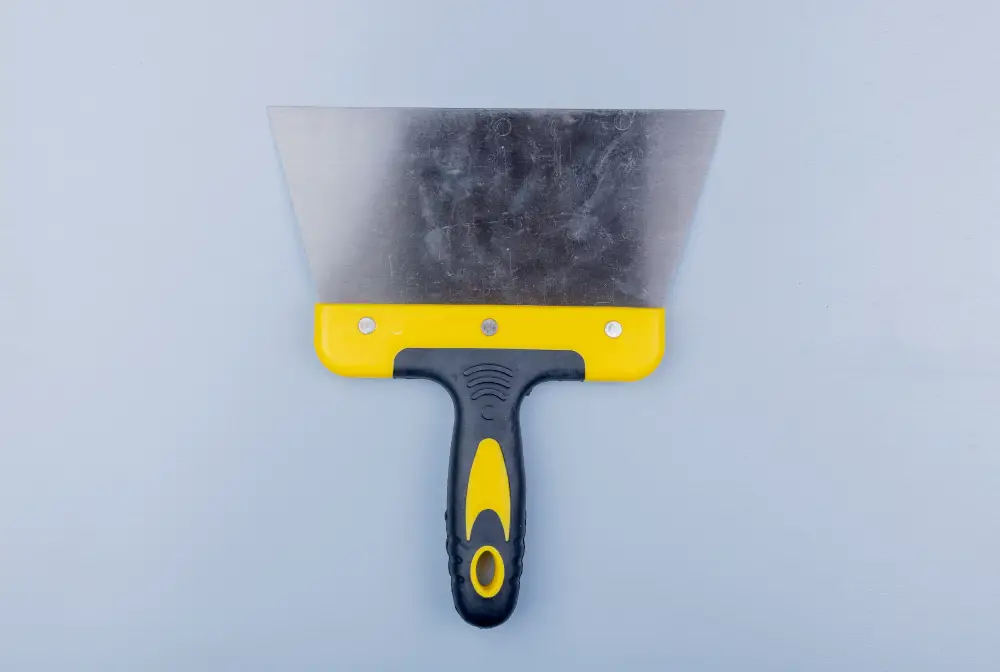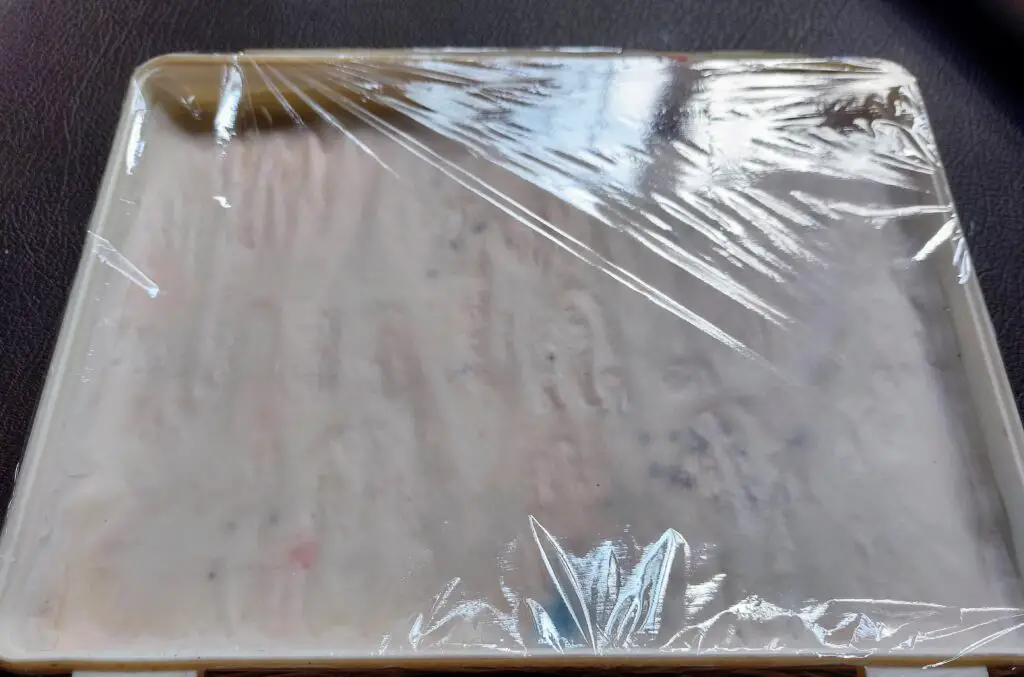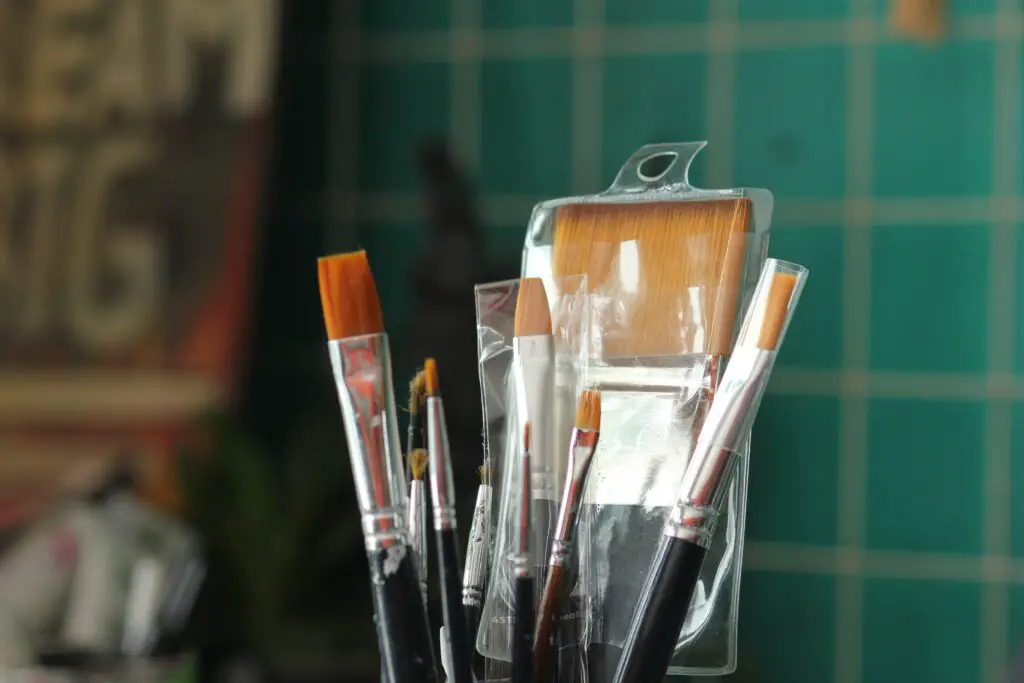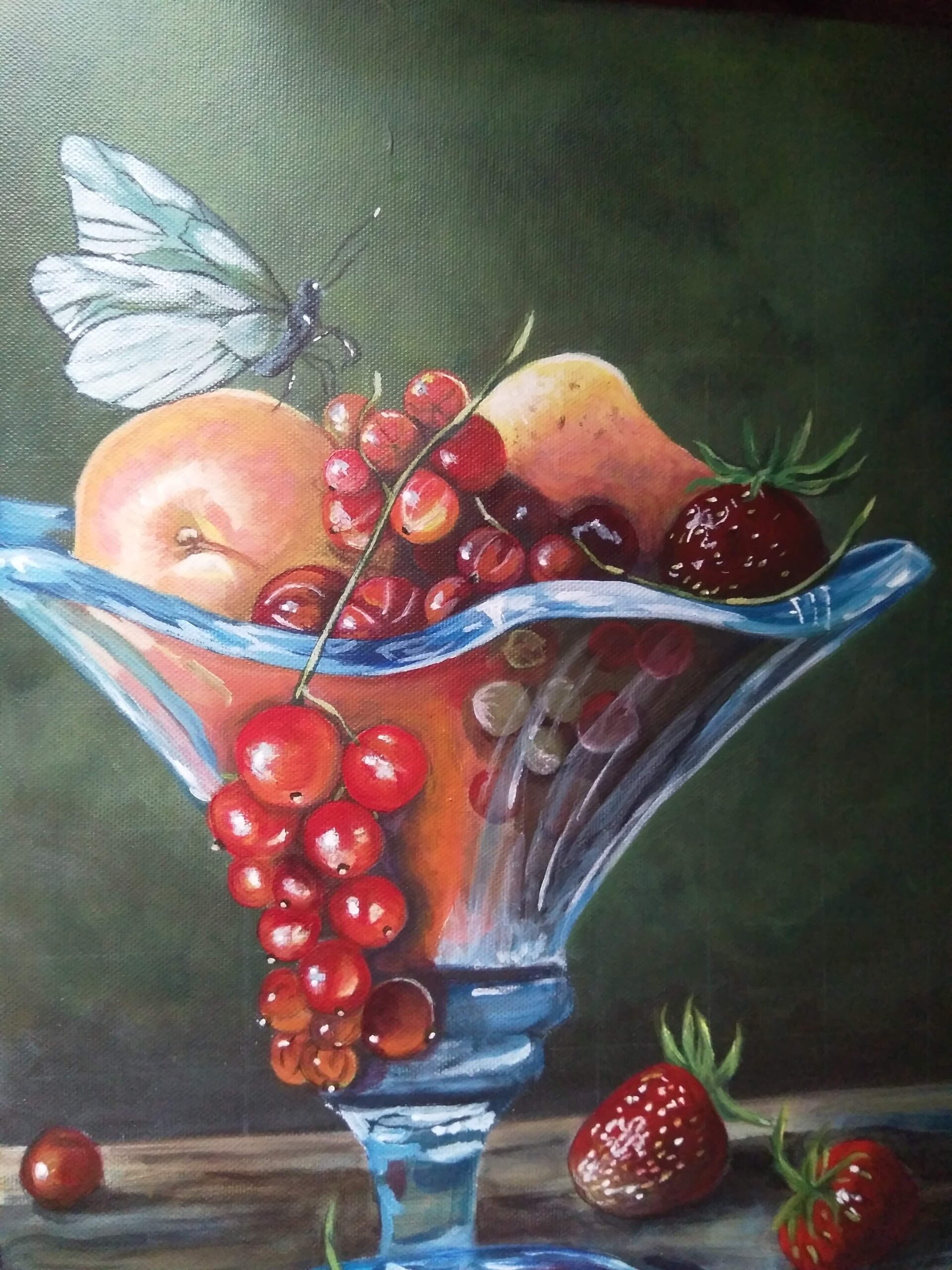Have you ever looked at a painting and thought ‘that acrylic painting looks very smooth, I wish I could finish my painting like that’? So why not, you can do a smoother acrylic painting if you follow the below simple tips and techniques.
To make acrylic painting smoother, apply multiple coats of gesso, and sand between each gesso layer, use soft synthetic brushes, use medium-body acrylic paint, paint in thin layers, keep the colors wet and workable when painting, use acrylic mediums and finally finish the painting with an acrylic varnish.
In this article, you will find a deep dive into the above-mentioned tips and techniques to create a smooth acrylic painting. These are some simple steps, yet artists might miss them sometimes.
1. Gesso the canvas to a smoother finish
Applying gesso is one of the best ways to get a smoother surface for painting. When you start on a smoother surface your painting would end up being smoother too. Normally a canvas or other painting surface needs about 2 to 3 coats of gesso. If you want an even smoother surface, then you can apply 8 to 10 layers of gesso or at least 5 (If your gesso is too thick, add a little water to it to thin it).
Due to its weaving, canvas doesn’t have a smooth surface in general. As a result of the canvas texture, it will feel rough to the touch. Even if your canvas is raw or pre-gessoed, you will need to apply at least two coats of gesso before painting. Because applying more gesso layers will give your canvas an even surface.

Some artists like to paint on a canvas with these textures because it is excellent for their application as well as paint adhesion. However, if you are looking for a smoother acrylic painting this textured canvas will not be ideal. Some artists prefer to use these extra smooth canvases for airbrush paint applications and drawings. However, these smoother surfaces are also good for thinner acrylic paint applications.
Gesso is a mixture of acrylic polymer emulsion, calcium carbonate, and Titanium White (as the coloring agent). It is a liquid ground to prepare a surface for painting or finishing. It is always recommended to gesso a canvas even if it was gessoed before. This is to improve the paint adhesion to the surface and also to make the surface smoother.
2. Use a roller brush and a taping knife to gesso
You can apply gesso smoother when you are doing it with the right tools. You can use a roller brush for easier yet even more smooth applications. It is easy to apply with a roller brush because you can do it effortlessly, and the gesso will spread all over the canvas evenly. You can Put the roller in a ziplock bag to avoid drying out. Also, you can use a store brought canvas, slightly sanding with sandpaper for this method.
Then go above the gessoed surface before drying with a taping knife which is normally used by house painters to apply and remove the joint compound. The taping knife helps to level the gesso, and remove some creases in between the weave of the canvas with very light pressure. Not to scrape but slowly pull the top thin layer of gesso.

Clean the taping knife. Then let this layer dry for 20 to 30 minutes, do the same step 5 to 10 times, and let the canvas dry overnight. You can do a bunch of canvases at one time to save more time. The key here is applying many more thin layers of gesso rather than one single thicker layer of gesso using the best possible tools. Please note that this process takes time but it’s worth it.
After the canvas is dried overnight, spray a good amount of water using a spray bottle and sand the canvas gently using a sanding block of 100 to 200-grit sandpaper. You can also sand between each gesso coat for a much smoother surface. Then use a microfiber towel to rub off the excess gesso on the canvas. Let this smoother canvas dry overnight before putting paint on it.
You can repeat these steps until you get a smooth canvas surface that is similar to hot-pressed watercolor paper.
3. Choose medium viscosity/body paint for smoother application
The best acrylic paint for a smooth acrylic painting is medium viscosity acrylic paint such as soft body acrylic paint or student acrylic paint with medium body viscosity. Viscosity is a measure of the flowy nature of a liquid. The higher the viscosity, the lower the flowy nature of the liquid. The viscosity of the paint will also determine how much pressure you need to use on the brush to keep the movement of the paint for exciting results.
Acrylic paint is commonly available in three viscosities or consistencies; these are heavy body, soft body, fluid, and high flow. Heavy-body acrylic paint is the most commonly used and has a thicker consistency and a higher viscosity. These paints are best for thicker applications as they create texture on the canvas.
However, you can thin the heavy-body acrylic paint with water or an acrylic medium like matte medium, gloss medium, or acrylic glazing medium.
Also if you want extra thin and smoother acrylic paint layers you can use fluid and high-flow acrylic paints. However, these acrylic paints have very low viscosity, watery applications, and will spread over the canvas. It is best if you want to paint in inky and watercolor like nature.
4. Use a stay-wet palette to keep the paint wet and workable
When painting on a canvas or any other surface you will need a smoother application with the paint. This will not be possible if your acrylic paint keeps drying and become lumpy and you try in vain to mix some water and revive the paint. Unfortunately, when acrylic paint is dried you cannot receive it.
Therefore the best solution to keep acrylic paint from drying and keep your paint lump free is to use a stay-wet palette. This palette comes with a sponge that can absorb moisture and papers on top where you can lay your colors. There is a lid to this palette that helps you close the palette and keep the paint from drying. A stay-wet palette will keep your paint workable and wet for about a week.
You can also DIY a stay-wet palette using some paper towels, baking paper/glassine paper, and a tray with a lid. If you want more details on this you can read my article; 11 Best ways of saving acrylic paint for reusing. You will get to know how I made my stay-wet palette inexpensively but effectively.

5. Use synthetic soft bristle brushes for smoother application
Choosing the right paintbrush can make all the difference in your painting. The best paint brush for smoother application is a synthetic paint brush as it doesn’t leave brush marks on the surface. Synthetic brushes are soft and smooth, while natural bristle brushes are a little harder and stiff.

Natural bristle brushes are made from animal furs such as squirrel, sable, hog, ox, badger, pony, etc, while synthetic brushes are made from synthetic fibers like nylon, polyester, or a mix of both.
Usually, stiff natural brushes can use for thick paint like oil paint. It creates some brush marks on your canvas. If you see Vincent Van Gogh’s style, you can notice brush marks left by his stiff brushes. Additionally, if you used natural brushes with acrylic paint, it can easily damage the brush.
You can use a synthetic brush to meet your acrylic painting needs. Synthetic brushes are often more durable than natural bristles and are a little stronger and springier. Nevertheless, not every synthetic fiber make equally. So, find the best synthetic soft paintbrushes for acrylics to meet your desired outcome.
6. Use a wet brush to seamlessly blend acrylic paint
Using a dry brush usually tends to create brush marks on the canvas. If you wet the brush before painting you will be able to get a smoother application of paint without any texture. This is the key to a smoother acrylic painting. You can use other acrylic media instead of water such as acrylic matte medium, gloss medium, and glazing medium.
Wetting a brush before painting will also make it easier to blend colors. This will create smoother transitions between colors without sharper and blunt transitions. When colors do not blend well, you will tend to overpaint an area leading to more texture on the canvas. So it is best to avoid that by painting with the right consistency.
If you want to know more about wetting the brush before painting you can read my article; Do you have to wet the brush before acrylic painting? There you will learn the best ways to use water in your painting.
7. Blend and apply the acrylic colors softly and smoothly
Making smooth transitions from one color to another is known as color blending. The ability to change between colors and values effortlessly is essential to improving your painting. This is often considered as hard to do by artists because of the quick-drying nature of acrylic paint.
However, if you learn how to blend colors with acrylic paint, it will be much easier to create an oil paint-like smooth appearance with your acrylic painting. You can use a stay-wet palette, retarder, and spray bottle to keep acrylic paint wet and workable for a long time.
If you want to know more about painting in smoother transitions without streaks and blotches with acrylic paint, you can read my article; 10 Best ways to fix blotchy or streaky acrylic paint. You will get to explore some cool techniques like using a mop brush for blending there.
8. Do not use the brushes used for other paint mediums
Brushes can get damaged more by acrylic paint. Acrylic paint tends to stick stubbornly on the bristles and handles of the paintbrush with time, no matter how much you cleaned them. However, do not try using oil paintbrushes or watercolor brushes for acrylic painting.
Water-based acrylic paint cannot be applied using oil-paint brushes. If you remember, water and oil do not mix. Similarly to this, if you use watercolor brushes for acrylic painting, you will not be able to use them again for watercolor. Watercolor paintbrushes will get stiff if they were not thoroughly cleaned. Therefore, keep your acrylic brushes apart from your oil or watercolor brushes.
This will ensure a smoother acrylic painting finish with fewer brushstrokes and help keep your painting process trouble-free.
9. Paint in thin layers for a smoother painting
Painting in thin layers is key to a smoother acrylic painting. If you paint thickly on the canvas, there will be texture on the canvas. So to paint thinly on the surface the acrylic paint consistently needs to be right. If you are painting with heavy-body acrylic paint mix with a little water to make the paint application smooth. If you are painting with soft body acrylic paint you may be able to paint directly on the canvas, but if you feel that the consistency is too thick you can mix it with some water.
As mentioned before you do not need to thin acrylic paint with just water. You can use many acrylic mediums with thinner consistency like acrylic matte medium, gloss medium, and glazing medium. This ensures a smoother application of paint.
Additionally, when your painting contains more layers it will create a sense of depth in the painting. You can define shapes add details and adjust colors as you add more layers of paint. However, it is important to keep in mind, to let the paint layers dry before you apply any more layers on top.
You can even use layering as a fixative for any mistake that happens. You can paint over the unwanted area if you don’t like that part of your artwork. Acrylic paint is one of the best mediums for layering techniques because the paint dries faster and does not reactivate with water.
10. Use acrylic mediums like flow aid for smoother application.
Flow aid is a less commonly used acrylic medium among artists. It helps to reduce the surface tension of the water in paint and helps to make paint thinner and flow better without reducing the color intensity. When the paint flows better it helps to apply the paint thinly with the same color intensity. It is a very nice way of applying paint.
If you are using the layering technique in your painting, you might be already thinning the paint with water. If you use too much water the acrylic paint will be diluted, which may result in uneven coverage. Try replacing water with a suitable acrylic medium thin the color while maintaining the consistency. You can use flow aid, acrylic gloss medium, matte medium, and glazing medium for this purpose.
If you want to know more about using acrylic mediums to thin acrylic paint, you can read my article;8 Easy ways how to make acrylic paint transparent. You will get to see the effect of many acrylic mediums there.
11. Avoid painting on areas that do not touch dry
Even though this is a simple tip, you need to wait until the previous acrylic paint layer is touched to dry, before applying another layer of paint on top. If you try to paint on top of wet paint, it will create some uneven lumps and bumps on the painting. It could lift the beautiful colors of the previous paint layer.
Depending on the application and some variables such as temperature, humidity, and surface, acrylic paint has a varied drying time. A thin layer of acrylic paint only takes a minute or two to become touch dry. However, a thick layer of paint may take up to 30 minutes or even an hour to dry. It depends on the surface type and the paint layer’s thickness.
So, before adding the next layer, allow the previous one to dry completely. Once the first layer is thoroughly dried, you can apply the second layer because the paint may feel dry to the touch and look dry, but it may still be drying underneath, especially if it is a thick paint layer. Try to avoid painting over areas that are yet to dry. It will help you create artwork that is free from lumps and bumps.
12. Airbrush with acrylic paint for extra smooth application
You might have heard about airbrush painting. It is one of the most popular techniques in the art world, automobile industry as well as in cosmetic industry. Airbrushing a painting helps very smoother paint application without any creases or unevenness.

Normally extremely low viscosity or thinner paints are used with airbrush. Therefore you need to thin the acrylic paint first. If you are using acrylic ink there is no need for thinning. But if you are using paint like soft body acrylics, you’ll need to thin them with airbrush medium, or else you can use 80% diluted flow to aid with soft body acrylic paint in a 1:1 ratio as recommended by Liquitex. If you’re using soft body acrylics, strain the colors before going through the airbrush to remove any lumps and pumps in paint and ensure smooth flow through the airbrush.
Even though you can thin soft-body acrylic paint to better flow through the airbrush, it is much more difficult to make a flowy mixture with heavy-body acrylic paint. Therefore go for low-viscosity acrylic paint when working with an airbrush. Furthermore, you should not airbrush or spray paint harmful pigment colors such as cadmium colors. Inhalation of cadmium could be detrimental to your health.
If you are more interested in the potentially harmful compounds in acrylic paint, you can read my article; Is acrylic paint harmful? (In different routes of exposure)
13. Apply varnish to make one cohesive painting
While working on your painting or before you begin, you can follow the above tips and techniques. You might wonder what you can do to get a smoother acrylic painting if you have already done your artwork. Varnishing is a great way to do that. Most artists think that varnishing paintings is only necessary for oil paintings. However, you can also varnish your acrylic painting and I highly recommend you do so.
Varnish acts as a transparent protective coat for the painting. Additionally, it can fill the dents and crevices in a painting, and provide one cohesive, smoother finishing to the painting. Varnish also helps to protect the painting from UV rays, dust, and grime over time.
The shine of the varnish may even help to hide the uneven patches of your painting if there are any. Apart from that varnish brings out the color in a painting. It gets all colors of the painting to the same level of color intensity and brightness, making a nice cohesion in every part of the painting.
Depending on what works best for you and your artwork, you can either brush or spray varnish onto your painting. For acrylic paint, be sure to use acrylic varnish. Before applying varnish to your work of art, read the labels on the varnish you purchase and test the material on a sample piece.
Conclusion
You can use these strategies if you are in the beginning, middle, or finishing stages of your painting to get a smoother finish. It is up to you to decide which technique is best for the problem or circumstance you are facing right now, using the information I have provided in this article. As Bob Ross said, “all you need to paint is a few tools, a little instruction, and a vision in your mind.”

